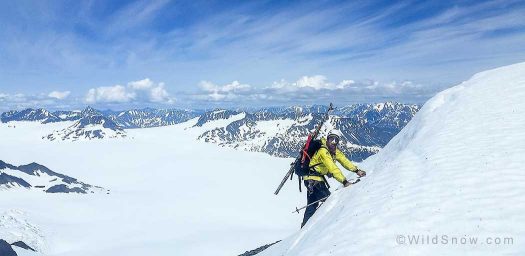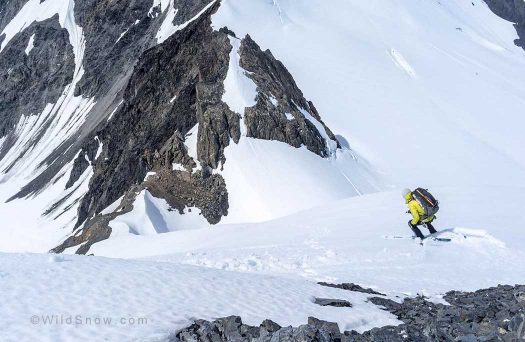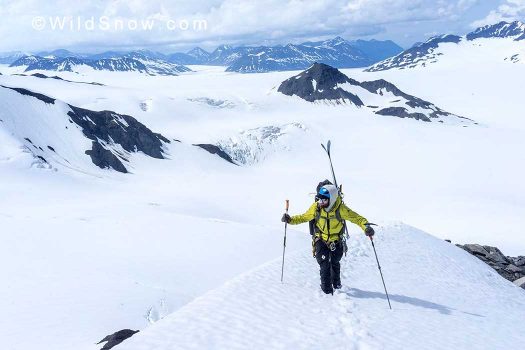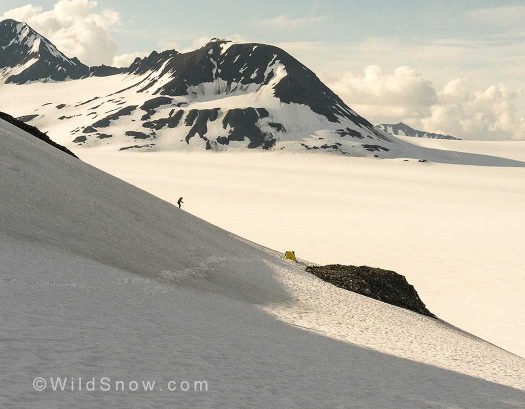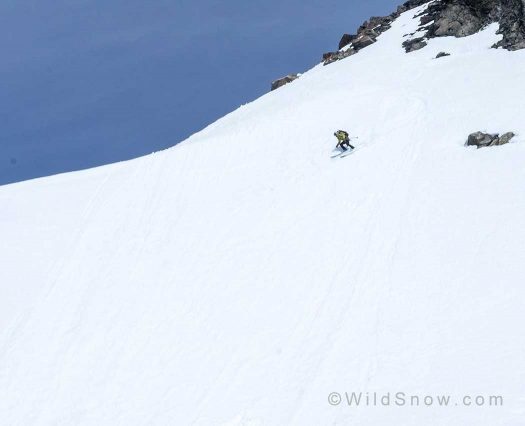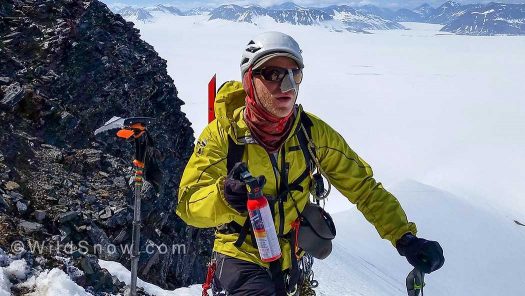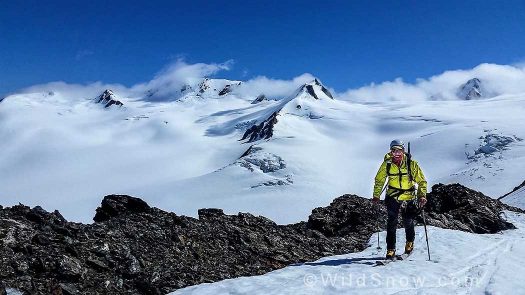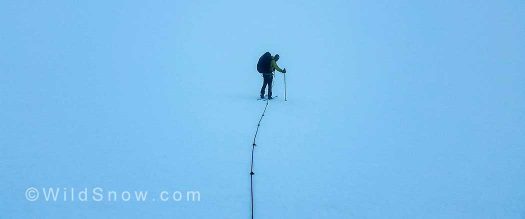It’s that time of year. If you want to go backcountry skiing in the Northern Hemisphere, you’ll probably have to work for it. Time for heavy packs, light skis, long walks, and perhaps even issues with animals for whom you’re a food source.
The Kenai Peninsula juts into the North Pacific south of Anchorage. The peninsula splits the Cook Inlet from the Gulf of Alaska, carrying the southern end of the Chugach Mountains with it. On the eastern side of the Kenai, epic amounts of moisture become snow, allowing the Harding Icefield to stretch over 1100 square miles between the fishing towns of Seward and Homer. The peaks only rise to between 4,000 and 6,000 ft, but the glacier outflows at sea level.
This place is big, notoriously wet, and one of the final vestiges of the ice age. It is changing fast, but for now a winter refuge is up there through the summer.
Nick Vincent and I headed onto the Harding last week for summer skiing, exploration, and fun.
The northern end of the Icefield is easily reached via the Harding Icefield trail — a pleasant and popular track from a Kenai Fjords National Park Visitor Center up alongside the Exit Glacier. The trail gains about 3500 ft over 4.5 miles: a reasonably low price to pay to get near endless summer access to snow.
Slow to gear up, we didn’t actually leave the trailhead until after 6:30 pm. While I caution against such reckless abandon, this time of year Alaska doesn’t really get dark and there was a special quality to venturing out onto the icefield in the middle of the night. No headlamps needed.
We camped on the lower shoulder of a nunatak and had a few stellar days of non-stop skiing before it began raining.
It was hot, sunny, and exhausting. From up high you could see the ocean to one side and ice to the horizon on the other.
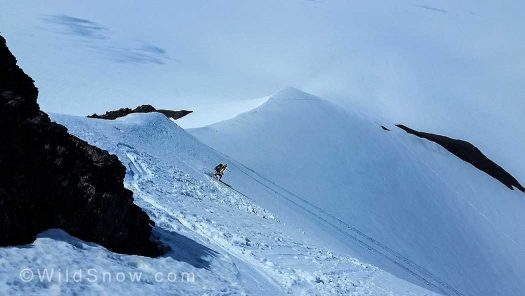
The nunataks up on the Harding were some of the most beautiful places I have ever skied. The turns were good too!
We skied until midnight. We managed crevasses, sloppy wet slides, and sunburns.
The nunatak we camped on gave us three very fun ski lines. A few miles to our east we found the best views. A bit north we found a few steep turns amongst the summer hotpow.
Our second day, we saw a bear cross the icefield and climb a peak we would have been proud to ski. Bears on ice was new for me. Knowing our camp had the only real food anywhere up there was disconcerting to say the least, but for some unknown reason the bears left us alone. Perhaps the wind was blowing in a favorable direction, or they didn’t prefer humans who hadn’t seen soap for days.
The added predator element set in once we started seeing bear tracks near camp. Amazing. I was skiing — on a big Alaskan glacier, up and down nunataks emerging from the biggest icefield entirely inside the United States — with bear spray. This definitely felt like bringing a knife to a gunfight.
Eventually our weather window closed. Warm, wet, and windy weather came in and the mighty Pacific Ocean answered the sunshine with rain, a reminder how delicate and susceptible our winter world is.
We skied out, and hiked down the trail to a line of hikers who thought we were crazy, stupid, or brilliant.
They asked questions like, “Skiing!? Where?” or, “So what are you training for with those heavy packs?”
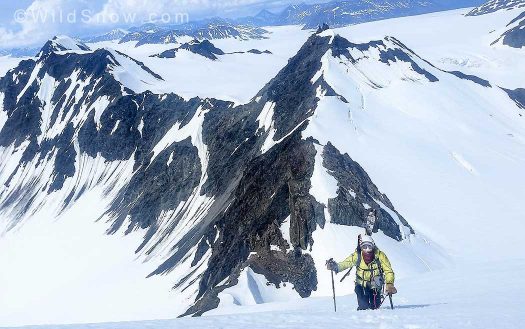
Right around here it started getting steep. We looked over our shoulders and a bear was climbing the peak behind me (for real).
We were there over a blue bird weekend and didn’t see another soul.
The road to the trailhead has dates posted along it where the retreating Exit Glacier used to extend to. Driving back to Seward passing these signs felt like driving out of the past and into the future. The snow was out of sight; the rainy air felt muggy.
Fortunately for now, the summer skier can still find a huge, fun, and awe inspiring piece of ice on the Kenai Peninsula.
Many thanks to the Outward Bound Staff Development Fund and Billy Roos Fund for supporting our trip! Vince is heading back out to the Kenai with Outward Bound students next week. What a spot they have for their course!
Dr. Alex Lee lives in Anchorage, Alaska. Alex is a professor at Alaska Pacific University, teaching philosophy and environmental studies. He also works as a sometimes guide, naturalist, writer, and photographer.


